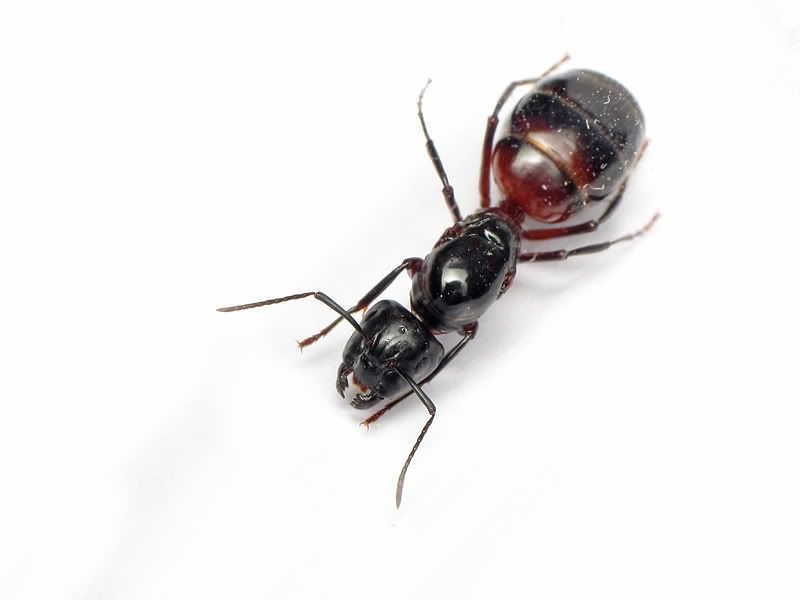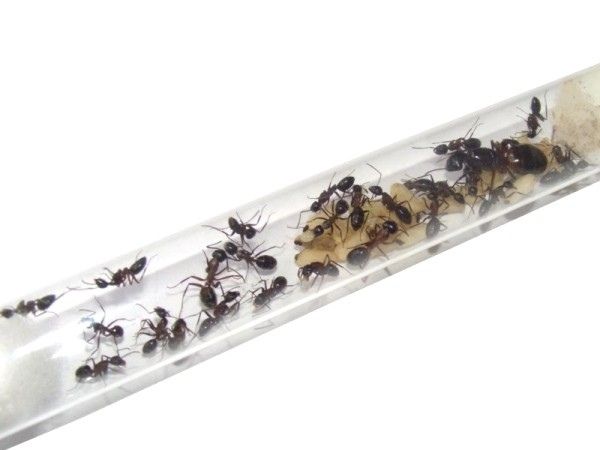Post by Deleted on Jan 26, 2012 1:34:17 GMT 1
[bg=a3b44f][atrb=border,0,true] |
[bg=fbd9bd] |
[bg=a3b44f] |
| [bg=fbd9bd] Taxonomy: Formicinae (Camponotus) Colony type: Monogynous (One Queen) Queen: Fully Claustral Color: Black Head with dark red/black thorax and part-red part-black gaster. Size: Queen 15-18 mm / Workers 6-14mm (Polymorphic; Majors, Media, Minors) Distribution: Europe Nutrition: Honey water, fruits, small insects, Temperature:Room temperature - 2-3 degrees warmer (Heating is advised) Hibernation: Not necessary, but advised. Air humidity: Moderate climate Nest building: Natural; sand, soil, loam. Artificial; Pumice, Y-Tong, Plaster, Glass, ect. Planting: Not Necessary Class: Easy |
[bg=a3b44f] |
| [bg=fbd9bd] Camponotus ligniperda is known as a European carpenter ant, arguably the largest native ant of the EU. C. ligniperda is a popular species in Europe, their large size, aggresive behavior, and polymorphism make this species very attractive to ant keepers. Colonies usually are found in part-wood part-soil nest combinations, but they can live solely in either as well. Nests contain approximately 1, 000 to 10,000 individuals, queens living 15-20 years in proper conditions. C. ligniperda will feed on insects, nectar, honey, sugar water, and fruits. Camponotus (American and European varieties) are best known for their inept ability to live in galleries made inside rotting or dead wood. Many species live in nests that have both wood and soil. These ‘Carpenter Ants’ do not eat the wood, as many believe, but live inside it. Flights happen in May-June, and dealate queens can usually be found after 11:00 AM. Be sure not to collect too many queens with wings, as Camponotus usually remove their wings directly after mating. |
[bg=a3b44f] |
| [bg=fbd9bd] C. ligniperda is best kept with single queens. Queens will normally produce 6-20 workers in their first year, depending on food availability and temperature. The more food, paired with heating, that you give a colony, the higher the output you can expect. Majors should not be expected during the first year, but minors and media are common. Majors are made as the colony gets larger. |
[bg=a3b44f] |
| [bg=fbd9bd] Because C. ligniperda is a carpenter species, use of wood is not advised. Colonies can be kept in Plaster, Hydrostone, Y-Tong, Pumice, Slim Nests, Tanks, and of course trusty test tubes. Nests should be 10-30 % moist. Traditional slim nests that are 1 inch or slimmer will not work well. The ants may be too restricted. |
[bg=a3b44f] |
| [bg=fbd9bd] Camponotus ligniperda eat insects, nectar, honey, sugar water, fruits. They also need access to fresh water at all times. |
[bg=a3b44f] |
| [bg=fbd9bd] Camponotus ligniperda does not shoot formic acid very often, but do use it for defense sometimes. They are fairly easy to keep, and are suitable for kids 13 and up, depending on maturity level. Petroleum Jelly/Vaseline is often used as an escape deterrent. Large outworld and live insects is advised in colonies of over 100 workers with Majors. Insects should not be fully immobile, but should also not be able to damage the ants. |
[bg=a3b44f] |
| [bg=fbd9bd] C. ligniperda hibernate in the wild and normally wake up in March. It is advised that they are hibernated in order to stimulate the queen into laying again. |
[bg=a3b44f] |
| [bg=fbd9bd] |

Colony in Test Tube
Colony in Y-Tong Nest


 Do you think I could get them? Im considering it...
Do you think I could get them? Im considering it... 